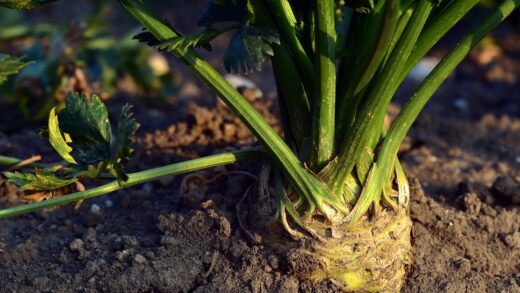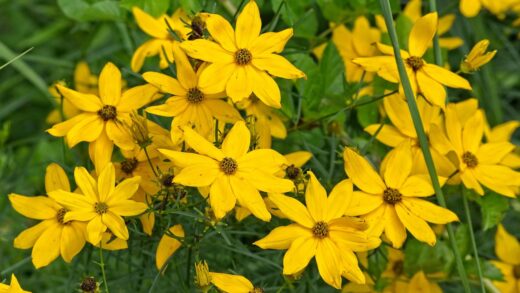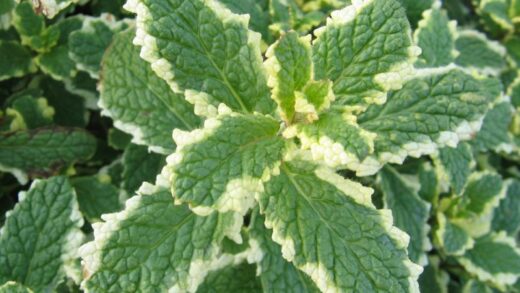Successfully guiding Darwin’s barberry through the winter months is crucial for its long-term health and a spectacular spring display. As a broadleaf evergreen native to the milder regions of South America, its ability to withstand cold temperatures depends heavily on its location, age, and the specific severity of the winter climate. While it is considered quite hardy, taking a few preparatory steps in autumn can make a significant difference in how well it emerges in the spring. The primary goals of winter care are to protect the root system from deep freezes, prevent moisture loss from the foliage, and avoid physical damage from snow and ice.
The plant’s natural hardiness allows it to tolerate frost and cold temperatures common in many temperate zones. Its small, tough, evergreen leaves are adapted to reduce water loss, which is a key challenge for evergreens in winter. When the ground is frozen, the roots are unable to absorb water, yet the foliage can continue to lose moisture to dry winter winds, a phenomenon known as desiccation or winter burn. Therefore, ensuring the plant is well-hydrated before the first hard freeze is a critical preparatory step. A deep watering in late autumn after leaf fall from surrounding deciduous trees will help to charge the soil with moisture.
Protecting the root system is another fundamental aspect of winter care, especially for younger, less established plants whose roots are not as deep or extensive. The roots are generally less hardy than the above-ground parts of the plant and are more susceptible to damage from fluctuating soil temperatures and deep freezes. A simple, yet highly effective, method of protection is the application of a thick layer of organic mulch around the base of the shrub. This insulates the soil, moderating its temperature and preventing the repeated freezing and thawing that can heave plants from the ground.
While mature, well-established plants in suitable climates may require very little winter intervention, it is always wise to be prepared for unusually harsh weather. Understanding the specific challenges of your local climate—whether it be heavy snow, ice storms, or strong, dry winds—will allow you to take appropriate, targeted measures. This proactive approach ensures that your Darwin’s barberry not only survives the winter but does so with minimal stress or damage, ready to burst into vigorous growth and bloom when spring returns.
Preparing the plant in autumn
The preparations for winter begin in late summer and autumn. It is important to cease all fertilization by late summer. Applying nitrogen-rich fertilizers late in the season encourages a flush of new, tender growth that will not have sufficient time to harden off before the first frosts. This vulnerable new growth is highly susceptible to frost damage, which can stress the plant and create entry points for diseases. Allowing the plant to naturally slow its growth and prepare for dormancy is a key part of its winter survival strategy.
More articles on this topic
As autumn progresses, it is important to manage the plant’s watering schedule correctly. While you should reduce the frequency of watering as temperatures cool and rainfall increases, it is vital that the plant does not enter the winter in a state of drought stress. Provide deep, thorough waterings as needed throughout the autumn, culminating in one final, heavy soaking before the ground is expected to freeze solid. This ensures the plant’s tissues are fully hydrated and that there is ample moisture stored in the soil for the roots to access whenever the ground thaws slightly.
Good garden hygiene in the autumn is also an important part of winter preparation. Rake up and remove any fallen leaves and debris from around the base of the Darwin’s barberry. This cleanup is crucial because dead organic material can harbor fungal spores and the eggs of pests, which can then overwinter and emerge as a problem in the spring. A clean area around the base of the plant also discourages rodents like voles and mice from nesting near the stem, where they can cause damage by gnawing on the bark during the winter months.
This is also the time to apply a protective layer of mulch. After a light frost has occurred but before the ground freezes hard, apply a ten-to-fifteen-centimeter layer of organic mulch, such as shredded bark, wood chips, or chopped leaves, over the root zone of the plant. Extend the mulch out to the drip line of the shrub, but be careful to keep it pulled back a few centimeters from the main stem to prevent moisture buildup and potential rot. This insulating blanket is one of the most effective forms of winter protection you can provide.
Protection against frost and wind
For younger plants, or in regions at the colder end of the barberry’s hardiness range, providing additional protection against harsh winter winds and extreme cold can be beneficial. Winter winds are particularly damaging because they accelerate the process of desiccation, stripping moisture from the evergreen leaves at a time when the roots cannot replace it. Creating a windbreak can significantly reduce this stress. This can be as simple as driving a few stakes into the ground on the windward side of the plant and stapling a length of burlap or horticultural fleece to them.
More articles on this topic
If a particularly severe cold snap is forecast, you can provide temporary extra insulation for the entire plant. A burlap wrap or a horticultural fleece blanket can be loosely draped over the shrub to trap radiant heat from the ground and offer a few degrees of protection. It is important that the covering reaches all the way to the ground to be effective. Ensure the covering is removed promptly once the extreme cold has passed to allow for good air circulation and to prevent heat buildup on sunny days, which can cause its own problems.
In areas that receive heavy, wet snow, the weight can cause the branches of the barberry to bend, splay, or even break. Before the first snowfall, you can loosely tie the main branches together with soft twine or strips of cloth. This helps the shrub to maintain its form and shed snow more effectively, preventing damage. After a heavy snowfall, it is a good idea to go out and gently brush the excess snow off the branches with a broom, using an upward motion to avoid putting additional stress on them.
For container-grown plants, winter protection is even more critical, as their roots are completely exposed to the ambient air temperature and are far more vulnerable to freezing than plants in the ground. The best solution is to move the pot to a more sheltered location, such as against a house wall, or into an unheated garage, shed, or cold frame for the coldest part of the winter. If the pot must remain in an exposed location, you can wrap the entire container in bubble wrap or burlap to provide insulation for the root ball.
Winter watering and moisture management
Although a Darwin’s barberry’s growth slows to a near standstill in winter, it is not truly dormant like a deciduous shrub. Its evergreen leaves will continue to lose small amounts of water, especially on sunny or windy days. Therefore, it is important to monitor soil moisture throughout the winter, particularly during prolonged dry spells or unseasonably mild periods. If the ground is not frozen and there has been no significant precipitation for several weeks, the plant will benefit from a supplemental watering.
When you do water in the winter, choose a milder day when the air temperature is above freezing. The goal is to rehydrate the soil so the roots can absorb the moisture. Watering when the ground is frozen is ineffective, and watering just before a hard freeze can potentially cause more harm by creating a solid block of ice around the roots. A winter watering session should be slow and deep, just as in other seasons, to ensure the moisture penetrates down into the root zone.
The presence of a good mulch layer, applied in the autumn, plays a huge role in winter moisture management. The mulch not only insulates the roots from cold but also significantly reduces the evaporation of moisture from the soil surface. This helps to conserve the water from autumn rains and winter snowmelt, keeping it available to the plant for longer. This reduction in moisture loss is a key benefit that helps the plant avoid desiccation and winter burn.
For plants in containers, winter watering requires careful attention. They will dry out more quickly than plants in the ground but are also more susceptible to freezing if overwatered. Check the potting mix every few weeks. If the top several centimeters are dry, water lightly, providing just enough to moisten the root ball without saturating it. Ensure the pot has excellent drainage so that no excess water sits in the container where it can freeze and damage the roots and the pot itself.
Assessing and recovering from winter damage
When spring arrives, it is time to assess your Darwin’s barberry for any signs of winter damage. It is best to wait until the threat of hard frost has passed and you see new growth beginning to emerge before you take any corrective action. One of the most common forms of damage is winter burn, which will appear as brown, dry, and crispy leaves, often on the side of the plant that was most exposed to wind and sun. While this can look alarming, it is often just superficial foliage damage.
Another common issue is dieback, where the tips of branches have been killed by the cold. These will appear dry, brittle, and will show no signs of new buds swelling. To check if a branch is truly dead, you can perform a “scratch test.” Use your fingernail or a knife to gently scrape a tiny section of the bark. If the tissue underneath is green and moist, the branch is still alive and may recover. If it is brown and dry, that part of the branch is dead.
Once you have assessed the extent of the damage, you can begin the cleanup. Using a sharp, clean pair of pruners, trim away any branches that have died back. Make your cut back to a point where you see healthy, green tissue or just above an outward-facing bud. Pruning out the dead and damaged wood not only improves the plant’s appearance but also encourages it to direct its energy into producing healthy new growth. Also, prune out any branches that were broken or cracked by the weight of snow or ice.
After pruning, a light application of a balanced, slow-release fertilizer can help the plant to recover and push out new growth. Ensure the plant is well-watered as it comes out of dormancy, especially if spring conditions are dry. In most cases, a healthy Darwin’s barberry will recover very quickly from minor winter damage, and the vigorous new growth of spring will soon cover up any bare spots, restoring the shrub to its former glory.
📷 Michael Wolf, CC BY-SA 3.0, via Wikimedia Commons


















